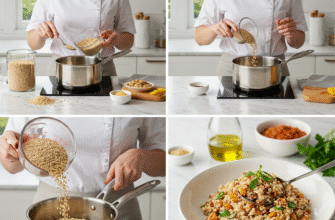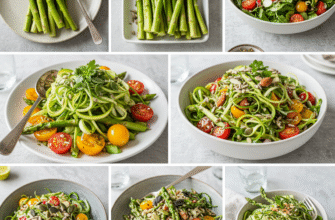Walk down the international or health food aisle of many supermarkets today, and you’ll likely encounter a firm, textured block often nestled near the tofu. This is tempeh, a traditional Indonesian food crafted from fermented soybeans. While tofu might be the more famous soy sibling, tempeh offers a unique culinary experience and a distinct nutritional profile that’s gaining fans worldwide. It’s more than just a meat substitute; it’s a versatile ingredient with a satisfying bite and a subtly nutty, earthy flavour.
Unlike tofu, which is made from soy milk curds, tempeh uses whole soybeans. These beans are soaked, partially cooked, and then inoculated with a specific type of mold, Rhizopus oligosporus. This mixture is then left to ferment for about 24-48 hours. During this time, the mold grows, binding the soybeans together into a compact, dense cake. This fermentation process is key – it transforms the soybeans, making them easier to digest and altering their flavour profile. The resulting block has a much firmer, chewier texture than tofu, often with whole beans visible, and it doesn’t require pressing before use.
From a nutritional standpoint, tempeh packs a respectable punch. Being made from whole soybeans, it retains more of the bean’s inherent goodness. It’s particularly noted for being a good source of plant-based protein, making it a popular choice for vegetarians, vegans, and anyone looking to incorporate more plant foods into their diet. The fermentation process also contributes potentially beneficial compounds and makes minerals like manganese and phosphorus more available. Furthermore, tempeh provides dietary fiber, contributing to its satisfying nature.
Getting Started with Tempeh in Your Kitchen
New to tempeh? Don’t be intimidated. Its firm texture makes it relatively easy to handle. While you *can* use it straight from the package, many people prefer to steam or simmer the block first. Cut the tempeh into your desired shapes (cubes, triangles, slabs), then place it in a steamer basket over boiling water or simmer it gently in water or vegetable broth for about 10-15 minutes. This step serves a few purposes: it softens the tempeh slightly, reduces any potential bitterness some people detect, and makes it more porous, allowing it to better absorb marinades and flavours.
After this optional pre-cooking step, pat the tempeh dry thoroughly. This is crucial if you’re planning to pan-fry or bake it, as excess moisture will prevent it from getting nice and crispy. From here, the possibilities are vast.
Simple Cooking Methods
Pan-frying or Sautéing: This is perhaps the most popular way to cook tempeh. Cut it into thin strips, cubes, or triangles. Heat some oil in a skillet over medium-high heat. Add the tempeh pieces in a single layer and cook for several minutes per side, until golden brown and slightly crispy. For extra flavour, marinate the tempeh for at least 30 minutes before pan-frying. Soy sauce or tamari, garlic, ginger, maple syrup, and liquid smoke are classic marinade ingredients.
Baking or Roasting: Baking is a fantastic, mostly hands-off method. Toss cubed or sliced tempeh with a little oil and your favorite seasonings or marinade. Spread it out on a baking sheet lined with parchment paper. Bake at around 200°C (400°F) for 20-30 minutes, flipping halfway through, until it’s firm, golden, and slightly crisp at the edges. This method is great for meal prepping larger batches.
Grilling: Tempeh holds up beautifully on the grill. Cut it into thicker slabs or cubes (use skewers for cubes). Marinate it for at least an hour to infuse flavour. Grill over medium heat for 5-7 minutes per side, or until grill marks appear and the tempeh is heated through. Basting with extra marinade during grilling adds more flavour.
Crumbling: Tempeh can be easily crumbled to mimic the texture of ground meat. After steaming (optional but recommended for better texture), simply crumble the block with your fingers or pulse it briefly in a food processor. Sauté the crumbles with onions, garlic, and your desired spices. This is perfect for tacos, chili, pasta sauces, and sloppy joes.
Delicious and Healthy Ways to Use Tempeh
Tempeh’s versatility shines in its ability to adapt to countless recipes across different meals.
Breakfast Ideas
Start your day with a protein boost. Thinly sliced, marinated, and pan-fried tempeh makes surprisingly convincing “bacon” strips – smoky, savoury, and satisfyingly chewy. You can also crumble steamed tempeh and sauté it with vegetables, nutritional yeast, and turmeric for a vibrant tempeh scramble, similar to a tofu scramble but with a firmer bite.
Lunch and Dinner Inspirations
For lunch, layer marinated and baked or pan-fried tempeh slabs into sandwiches or wraps with your favorite fillings like lettuce, tomato, avocado, and sprouts. Add crispy baked tempeh cubes to salads for texture and substance, replacing croutons or adding a plant-protein punch. Tempeh is a natural fit for stir-fries; its firm texture holds up well alongside crisp vegetables and flavourful sauces. Cut it into cubes or triangles and add it towards the end of cooking. It also absorbs flavours wonderfully in curries and stews, adding heartiness and texture. Think Indonesian-style curries, Thai green curry, or hearty vegetable stews. And don’t forget those crumbles! Seasoned tempeh crumbles are fantastic in tacos, burritos, burrito bowls, or stirred into your favourite pasta sauce.
Snacking with Tempeh
Looking for a healthier snack? Try making tempeh “fries” or chips. Slice the tempeh thinly, toss with oil and seasonings (like smoked paprika, garlic powder, salt), and bake until crispy. Serve with your favourite dipping sauce.
Verified Versatility: Tempeh is a fermented whole soybean product originating from Indonesia. Its firm texture and nutty flavour make it incredibly versatile in the kitchen. As a good source of plant-based protein and dietary fiber, it can be easily incorporated into various meals.
Flavor Pairings
Tempeh’s mild, nutty flavour is a blank canvas, ready to soak up whatever tastes you throw at it. Marinades are your best friend here. Classic combinations often involve soy sauce or tamari for umami depth, balanced with a touch of sweetness (maple syrup, agave), some acidity (vinegar, lime juice), and aromatics (garlic, ginger). Smoky flavours work exceptionally well – think liquid smoke, smoked paprika, or chipotle powder. Don’t shy away from herbs and spices; cumin, coriander, chili powder, oregano, thyme, and rosemary all pair nicely depending on the dish’s cuisine.
Choosing and Storing Tempeh
When buying tempeh, look for a block that feels firm and is vacuum-sealed tightly. The soybeans should be bound together by a dense, white mycelium (the mold). Some grey or black spots on the surface are perfectly normal – this just indicates areas where the mold has sporulated, often near air pockets or where the beans press against the packaging. However, avoid tempeh that shows signs of pink, yellow, or blue discoloration, feels slimy, or has an ammonia-like smell, as these indicate spoilage.
Store tempeh in the refrigerator and check the expiration date. Once opened, wrap it tightly or store it in an airtight container and use it within a few days. Tempeh also freezes well. You can freeze it in its original packaging or slice/cube it first for convenience. Thaw frozen tempeh in the refrigerator before using.
In conclusion, tempeh is far more than just another soy product. Its unique texture, born from fermentation, and its ability to absorb flavours make it a fantastic ingredient for anyone exploring plant-based eating or simply looking for new, interesting foods to add to their rotation. From crispy pan-fried slices to hearty crumbles in sauce, tempeh offers a satisfying and adaptable option for countless delicious meals.








